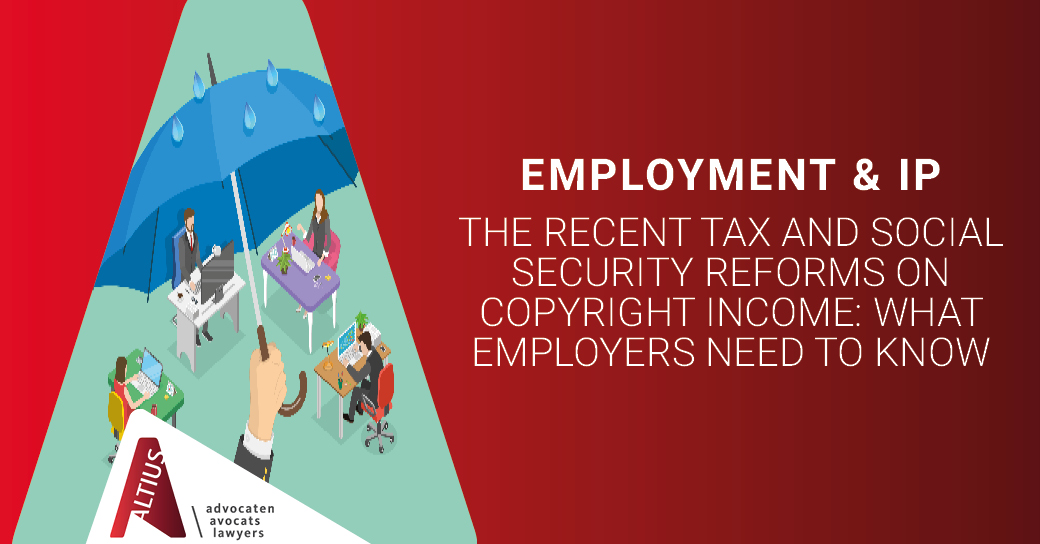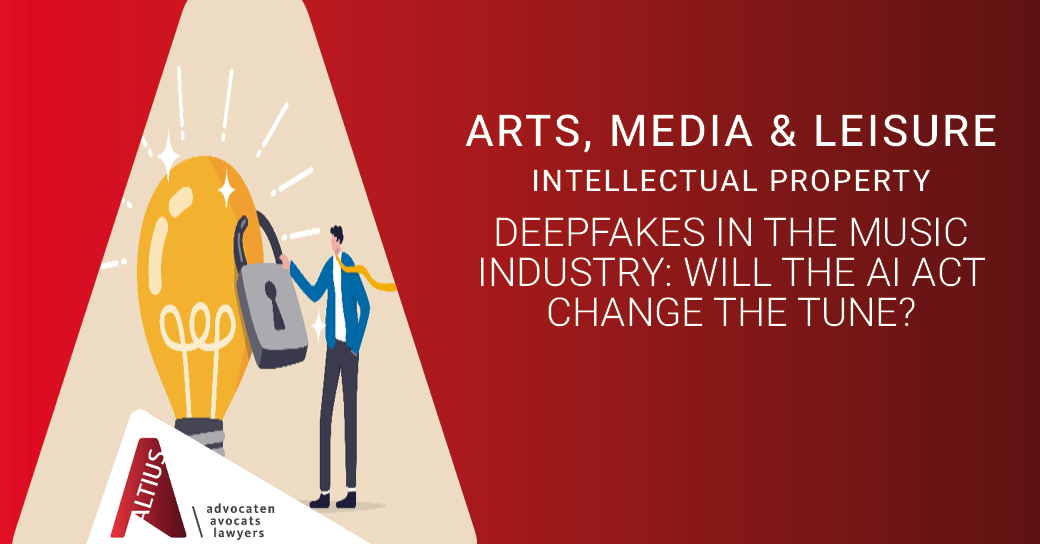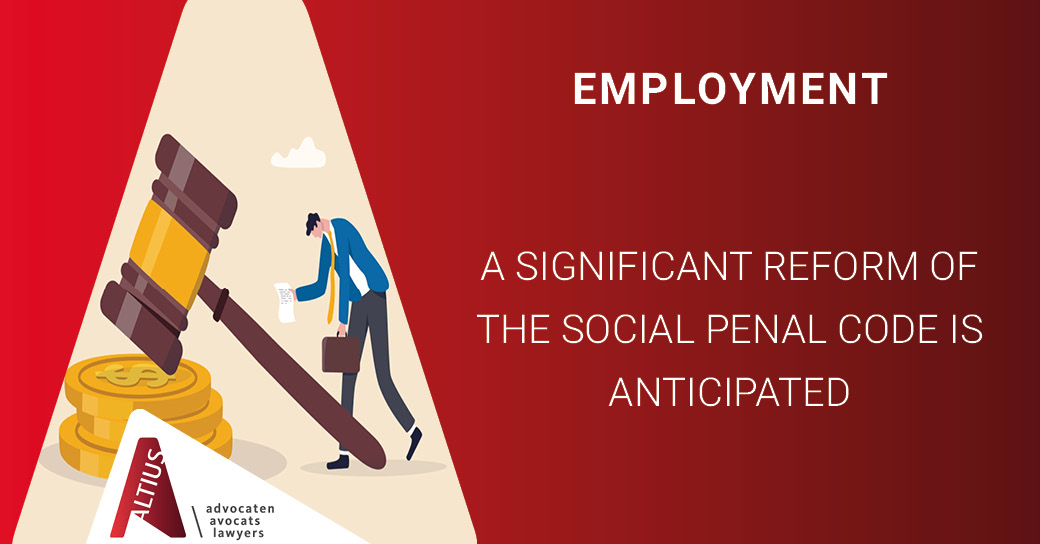The recent tax and social security reforms on copyright income: what employers need to know

Following an intense debate, the legislator introduced a new tax scheme applicable to copyright income. The main reason for this initiative is the assumed abuse of the until then beneficial tax regime. Under the amended tax rules, employees still qualify for the special tax scheme, but with a stricter legal framework. The tax reform was the immediate trigger for the legislator to revise and to clarify the position on social security contributions with respect to copyright income as well.
In this newsletter, the ALTIUS and Tiberghien teams jointly set out the key principles and take aways.
1. What you need to know before
- An employer is not automatically owner of a copyright created by an employee
An employer does not automatically own the (economic) copyrights [1] in works created by an employee in the execution of the employment contract [2]. An employer can obtain these rights only after a transfer (or license) which must be stipulated in writing. This explains why employment contracts often include clauses providing that the employee transfers their copyrights to the employer.
As a counterpart for the transfer, the employer and employee can agree on a financial compensation.
The question then arises to what extent such compensation (“copyright income”) is subject to taxes and social security contributions.
- What is copyright income?
The new regime applies to income from the transfer or licence of copyright and performer’s related rights by the original holder of these rights. A transfer or licence by the employee to the employer can be subject to the new regime.
Copyright are the rights vested in the authors of “a literary or artistic work” under article XI.165 of the Code of Economic Law (CEL). This notion is not defined and should be interpreted broadly [3].
To obtain copyright protection, two conditions must be met, namely (i) the existence a work expressed in some way that (ii) is original:
- The “expression” requirement
The “expression” requirement implies that the work was expressed in one other way. However, that form of expression does not need to be permanent, nor does the work have to be fixed in some medium to enjoy protection. An ephemeral expression is sufficient.
Example: An oral presentation by an employee may be copyrightable even if it is not recorded.
- The work must be “original”
A work is, according to established case law of the CJEU, “original” when it is “an intellectual creation of the author which reflects the author’s personality and is expressed through the free creative choices of that author in its creation” [4] .
If these conditions are met, copyright arises automatically. Any registration, such as is required for trademarks and patents, is therefore not required.
The performer’s neighbouring right relates to the performance or execution of an author’s work, e.g. a singer singing a song, someone proclaiming a poem, etc. Originality is not a condition for protection. It does presuppose a “personal” performance, i.e. a performance for which the performer uses his personality attributes (voice, facial expressions, body, virtuosity…). .
The new regime requires that the rights are transferred or licensed with a view to exploitation or actual use, in accordance with fair professional practice, by the transferee, the licensee or a third party. This means that the employer must have the intention to exploit the works created by the employee.
For employees, the additional condition is that they transfer or license the right of communication to the public or for reproduction. The intention of the legislator is to reserve the system for situations in which the work is available to the general public.
2. The new tax treatment on copyright income
Copyright income obtained by an employee is subject to a special tax scheme, implying that this income is in principle regarded as movable income, separately taxable at 15%[5] in personal income tax.
The 15% tax rate, deducted via tax withholding, is applied to the net copyright income, after the author has deducted actual expenses.
Alternatively, the author can also choose to apply a fixed cost sum:
– 50% for copyright income from EUR 0 to €18,720 for income year 2023;
– 25% for copyright income from €18,720 to €37,450 for income year 2023.
The withholding tax is not liberating: copyright income must still be reported in the annual personal income tax return.
However, this special tax scheme does not apply unlimitedly. If the copyrights are used for the exercise of the taxpayer’s professional activity, the following limits must be taken into account:
- 30% rule
If there is a ‘delivered performance’ – and only then – the copyright income is only subject to the special tax scheme to the extent that it does not exceed 30% of the total remuneration received by the author (including remuneration for ‘making’ the work). If the copyright income is higher, the excess is taxed as a regular professional income and subject to the progressive tax rates.
The 30% rule will be gradually introduced: for income year 2023 the copyright income (regarded as movable income) can amount up to 50%, in income year 2024 40% and from income year 2025 onwards it will be permanently set at 30%.
When exactly there is a “performance” is not legally defined, but an employment relationship will qualify as a “performance”.
If the transfer or licensing of the rights is not part of a delivered performance or if there is a second (or subsequent) transfer of the rights, the 30% rule does not apply.
- Absolute threshold amount
The copyright income only falls under the special tax scheme to the extent that it does not exceed €70,220 in income year 2023. If the copyright income is higher, the excess is taxed as a regular professional income. This threshold is not new and already existed under the previous special tax regime.
- Average threshold amount four previous income years
The copyright income in a relevant income year will only fall under the special tax scheme if the average contractual copyright income of the past four income years is less than €70,220 in income year 2023. If the average of the past four years is more – regardless of the amount of the current income year – the copyright income of that year is fully taxed as a regular professional income.
If the copyrights are not used for the exercise of the professional activity, these limited should not be taken into account: the entire copyright income always falls under the special tax regime and will be taxed at 15% in personal income tax.
When exactly there is “professional use” must be evaluated on a case-by-case basis.
Note that (regardless of the legal limits) the tax authorities may also consider that the declared copyright income covers something else than a transfer or licensing of copyrights (for example because the works in question are not protected by copyright or the remuneration is apparently too high). The burden of proof of this lies with the tax authorities.
3. The new social security treatment on copyright income
Until recently, and inspired by the case law of the Court of Cassation, the social security administration qualified copyright income as “salary”, subject to social security contributions.
This now changes. Subject to certain requirements being met, the copyright income an employee receives will no longer qualify as salary and thus be exempted from employer and employee social security contributions:
- The exemption only applies to the extent the financial compensation does not exceed 30% of the sum of the total gross salary subject to social security an employee is entitled to and the total copyright income an employee received for transferring and/or licensing copyrights during a calendar year. In case the cap is exceeded, only the excess and not the entire copyright income becomes subject to the regular tax and social security contributions.
- Both the employee’s salary as well as the copyright income must be determined at arm’s length in line with market practices. No further guidance is given as to the at arm’s length concept. It remains to be seen in practice how this concept will be interpreted.
- An employer must clarify an employee’s copyright income in the quarterly DmfA social security declaration.
Furthermore, there is also an explicit conversion prohibition. Similar to what applies to other social security exempted benefits such as meal vouchers, it is not possible to benefit from the social security exemption in case salary, premiums, benefits in kind or any other advantages, whether or not subject to social security contributions, are converted into copyright income (but a tolerance policy may apply).
It is assumed that some employers may expect additional audits and social security rectifications for the past if they now suddenly declare to the social security administration the payment of copyright income while they did not do so in the past (and granted copyright income to employees without paying social security contributions). That is the reason why a “grace period” is granted for income years 2018 – 2022. Employers who granted copyright income to their employees during this period and who correctly reported this as movable income to the tax administration but did not declare this copyright income to the social security administration (although they were obliged to do so), can voluntarily proceed with a rectification without this will trigger the payment of additional contributions, lump-sum sanctions and interests. Employers who want to benefit from this measure need to proceed with the required declaration with the social security administration before 30 June 2023.
4. Entry into force
The new regimes are applicable since 1 January 2023 to income paid or granted from that date onwards, with retroactive effect for the social security scheme.
As regards the tax scheme, a transitional regime is in place for taxpayers who no longer fall within the new scope of the tax definition of copyright: for income year 2023, they can still apply the old regime under certain conditions. This could be relevant for employees in the IT sector.
In contrast, the new (tax) limits apply immediately to all taxpayers. For taxpayers falling under the transitional regime, the absolute threshold amount and the fixed cost sum are halved.
5. Action points
Do you already pay copyright income to your employees or do you consider paying copyright income to your employees?
- Make sure that the employment contracts include a duly drafted IP-clause, with a copyright income at arm’s length;
- Check whether copyright income still falls within the material and personnel scope of application of the special tax scheme and the social security exemption. If IT profiles are no longer eligible, they can still benefit this year from the transitional tax arrangement (under certain conditions and restrictions);
- If you obtained a tax ruling, it will in principle expire;
- If needed, undertake the necessary steps to benefit from the temporarily grace period provided by the social security administration;
- For copyright income paid or awarded from 1 January 2023, tax forms 281.45 must be submitted by the employer and latest on 29 February 2024;
- A circular is expected for more clarity on the tax scheme.
If you have any specific questions or would like to obtain more detailed information about this subject, then the ALTIUS and Tiberghien teams are available to further assist you. We can assist with revising, drafting and filing of tax rulings; the setting-up of alternative remuneration schemes; drafting IP-clauses and related agreements.
Alexander De Bleeckere – Managing Associate Altius – alexander.debleeckere@altius.com
Emma Van Caenegem – Counsel Altius – emma.vancaenegem@altius.com
Gauthier Vandenbossche – Scientific Advisor Tiberghien gauthier.vandenbossche@tiberghien.com
[1] Only the economic rights (reproduction, adaptation, communication to the public, …) are transferable; the moral rights (integrity, paternity, divulgation) not.
[2] A different regime applies to databases, software and designs. The economic rights in databases, software and designs created by employees during the execution of the employment contract are by law property of the employer, unless parties agree otherwise.
[3] See art. 2(1) of the Berne Convention (the basic international copyright treaty) which gives a non-exhaustive enumeration of these works.
[4] See, inter alia,[4] ECJ 11 June 2020, No C-833/18, ECLI:EU:C:2020:461, Brompton.
[5] Unless the legal limits are exceeded and the copyrights are used for the exercise of the taxpayer’s professional activity (in which case the normal rules and rates apply).
Written by
Recommended articles
Deepfakes in the music industry: Will the AI Act change the tune?
The emergence of deepfake technology, particularly within the music industry, has sparked significant debate and concern. Deepfakes, which are synthetic media generated using AI to replicate and/or manipulate a known artist’s likeness and/or voice, have the potential to revolutionise the music industry.
Read onInternal investigations: an employee’s right to be assisted during an interview.
Although employers have been proceeding with internal investigations for decades, nowadays they raise more and more legal questions. Driven by legislative initiatives and case law trends, there are many situations in which an employer may be forced to an internal investigation.
Read onA significant reform of the Social Penal Code is anticipated
A new draft Act has recently been submitted to the Belgian Parliament that aims to amend the Social Penal Code which lists the infringements of labour and social security law that are punishable and the related penalties.
Read on


